Email Marketing Strategy: 9 Tips for Success
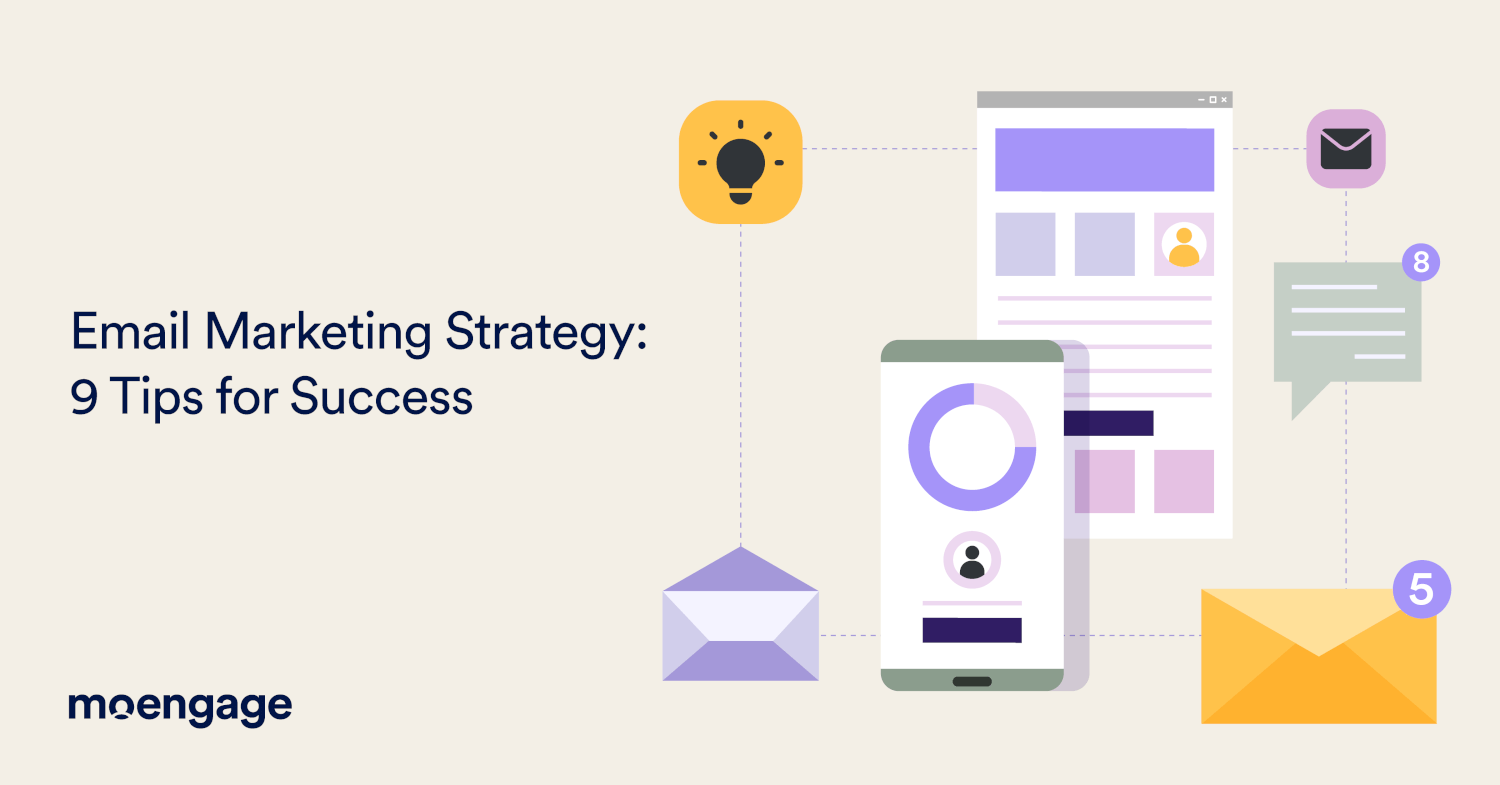
Reading Time: 11 minutes
Why do you need an email marketing strategy? Because the approximate number of email users is now 4.59 billion, more than half of the world’s population.
It’s not as simple as sending out a bunch of emails, however. In fact, taking that approach can backfire, leading to disgruntled customers, unsubscribes, and poor deliverability. No, tapping into that massive number of email users requires a carefully considered email marketing strategy, one that will lead to satisfied customers and a healthy return on your investment.
But how do get started with such a strategy?
In this post, we’ll explain email marketing strategies, how they differ from tactics, and how to build your own effective email marketing plan while adhering to best practices.
What Is an Email Marketing Strategy?
An email marketing strategy is a plan for how to use email as a channel to achieve a specific goal (or set of goals). We often confuse strategy with tactics. In fact, if you Google “email marketing strategy,” you’ll find advice on how to do the tactics with no discussion of strategy at all. But strategy is not tactics. Strategy is the long-term plan to pursue a goal. Tactics are the short-term steps to make it happen.
And before strategy, you need the goal. Your goal drives the strategy and therefore the tactics.
As you set out to define your email marketing strategy, your goal needs to be specific and measurable. You need to clearly define what success will look like and how you will measure your progress towards that goal. Your goal might be growing your list, increasing your open rates, building loyalty or lifetime value among customers, or something else. Whatever your goal, your strategy is your plan for achieving that goal.
Email marketing tactics vs. strategy: what’s the difference?
As we said above, email marketing tactics and strategy are often confused. To understand how they differ, think of it this way: The tactics are the steps you’ll take to implement the strategy and therefore achieve the goal. Or break it down the other way: First you establish a goal, then you plan your strategy for achieving that goal. Finally, you determine the tactics that will make the strategy a reality.
For example, let’s say your goal is to grow your email list by 20%. Your email marketing strategy will be your plan to make that happen. As you create your strategy, you might consider your audience, content, automation, personalization, and other factors. How you approach each of those factors will be your tactics.
Your strategy might be to target first-time visitors to your website (audience) with a huge discount on their first purchase if they subscribe (content). Then your tactics are how you go about implementing this.
That’s a simple example and chances are your email engagement strategy will be more sophisticated. But it gives you a breakdown of email marketing strategy vs. tactics.
Creating an Effective Email Marketing Strategy Plan: 4 Steps
If you’re overwhelmed by the idea of creating an email marketing strategy, don’t be. We’ve broken down the process into four steps, as outlined below. You won’t find anything fancy here, only the basic steps to follow when developing an effective email marketing strategy for your B2C brand.
Step 1: Determine the goal for your email marketing strategy
First and foremost, determine your goal and make it specific. If your goal is to increase ROI, decide by how much and by when and make that part of the goal. If your goal is to re-engage inactive subscribers, be specific: how many of them, and what will re-engagement look like?
You want your goal to be specific so it is measurable but also because that will help you determine your email marketing strategy plan.
Step 2: Determine your email marketing strategy
Once you know your goal, you need a plan to make it happen. As the saying goes, a goal without a plan is just a dream.
Let’s say your goal is to increase email open rates from 22% to 30% by the end of the year, a goal that is both specific and measurable. Then your email marketing strategy must focus on how you will increase your open rates within that timeframe. As you develop your strategy, you will want to consider factors such as:
- Audience
- Content
- Personalization
- Automation
- Timing
Your strategy might be to target the inactive segment of your audience with a contest, personalize subject lines, and use automation to automatically resend emails to non-openers while sending them at the optimal time to increase the likelihood of their opening.
Step 3: Determine your email marketing tactics
You have your goal and your email campaign strategy (or plan). Next, you determine your tactics.
For example, if you want email marketing strategies to increase sales, your tactics are the steps you take to make those strategies happen. How will you increase sales? By growing your email list? By upselling and cross-selling to existing customers? By segmenting your audience? By implementing a loyalty plan?
Let’s go back to our example goal: increasing open rates. And then, let’s get tactical. How do we make this happen? By taking steps to make our plan a reality.
- Target the inactive segment of your list, to get them to open your emails and to get them to keep opening your emails. (Audience)
- Offer these inactive subscribers a contest they can enter to entice them to open an email. (Content)
- Use the best email subject lines to boost open rates, but also personalize the subject line and the contest. (Personalization)
- Resend emails to non-openers and to send reminder emails about the contest to those who did open the email but didn’t enter the contest. (Automation)
- Use email marketing tools like your platform’s Best Time to Send (BTS) feature to land that email in a subscriber’s inbox at the right time. (Timing)
Part of your email campaign strategy could also be implementing a campaign to keep these newly re-engaged subscribers engaged and opening your emails, perhaps by reporting on the contest while also offering discounts or other offers to re-engage them.
Step 4: Decide when and how you will measure your results
You will start with a measurable goal, so step 4 is ensuring you have a plan for measuring the results to see if you will achieve your goal. After all, the best email marketing strategies will fall flat if there isn’t a way to track the results. You’ll want to track progress on your strategy over time, in part because you might need to test and adjust as time goes by to make your goal a reality.
How to Do Email Marketing Effectively: 9 Tips
Beyond developing your strategy, you also want to make sure you know how to do email marketing effectively. After all, the best email marketing strategies in the world will fall short without sticking to these tried-and-true email marketing best practices. We’ve highlighted nine of the most important below.
1. Use compelling offers to build email lists
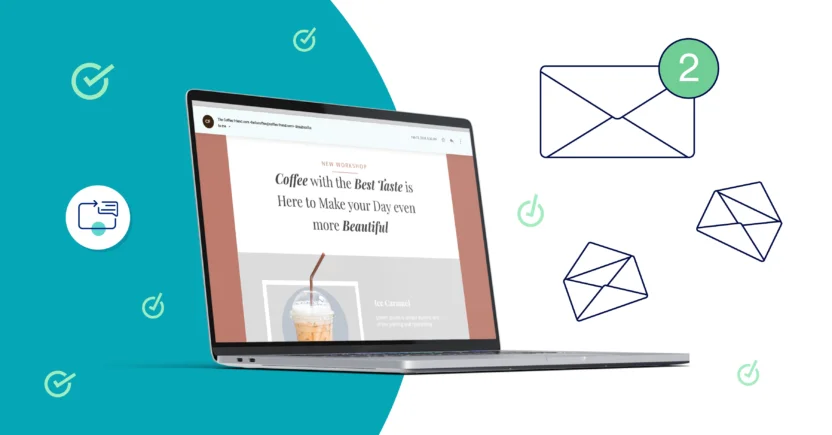
Whether your email marketing strategy is to build your email list or not, you need compelling offers to entice people to subscribe. You can grow your email list in all kinds of ways. Perhaps the most common is a pop-up that offers something in exchange for an email address.
Some brands get creative and even gamify these offers with a spin-the-wheel option with different discounts. Or you can offer a personalized quiz that gives you information on a prospect and gets them to subscribe. You can find other examples in this email marketing guide.
You’ll soon realize the options for getting people to subscribe are practically unlimited. Growing your list is something you’ll need to continue to do over time as people drop off lists either because they lose interest, don’t like the content, or for some other reason.
2. Keep your email lists clean and up-to-date
Beginner email marketers often make the mistake of sending emails to as many consumers as possible to maximize conversions. This not only causes more unsubscribes rather than more conversions. It also damages your sender reputation and therefore your deliverability. If your emails are not being delivered, no level of strategy can help you, so it is critical to maintain good list hygiene.
The frequency at which you should review and clean your email list depends on various factors such as the size of your list, the rate of email bounces, and the engagement of your subscribers. However, it is generally recommended to review and clean your email list at least once every three to six months.
This helps to remove inactive or unengaged subscribers, reduce the risk of spam complaints, and maintain a healthy email deliverability rate.
You can clean your list to remove hard bounces, and you can segment the rest of your list for more effective email marketing. How? By sending relevant emails to the right people. The most engaged on your list will receive different types of messages than the least engaged people on your list. And you can always come up with an email marketing strategy to re-engage the less engaged!
The best email marketing software will do some list hygiene for you automatically, but you still need to stay involved with your list hygiene and performance so you know when you need to take action to improve your deliverability, open rates, or some other metric.
3. Make your emails relevant and timely
On average, people receive over 120 emails per day. You need to make sure your B2C marketing emails stand out in those crowded inboxes. Otherwise, there’s no point in sending them because they will be ignored. That’s why your emails need to be personalized in both content and timing. Sending the right message at the right time is one of the best ways to stand out and to give your customers confidence that it is worth their time to open an email from your brand.
This best practice applies to all types of emails you might send, from the welcome email to the special offer to the re-engagement. Get inspired by these real-life relevant and timely email marketing examples. You might just find the email marketing strategy example that is a perfect fit for your brand!
4. Personalize your emails through segmentation
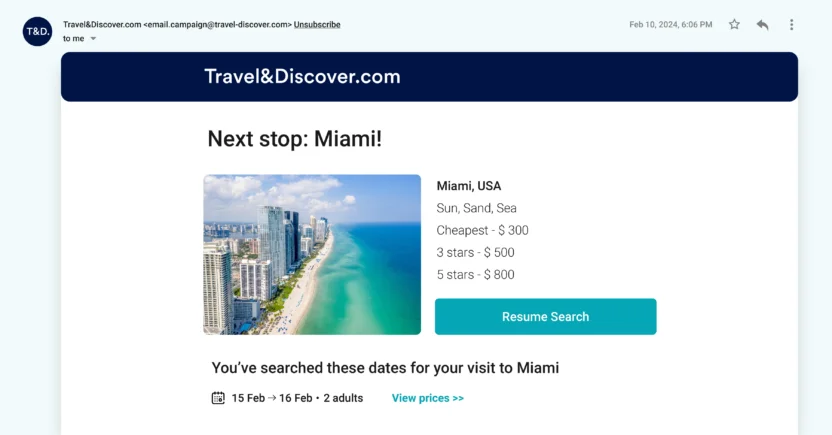
In addition to relevant and timely emails, take your email marketing strategy to the next level with personalization. And these days, personalizing means more than “Dear Name.” That’s because email marketing software has made it possible to segment your audiences plus put AI to use to personalize your emails even more.
You can segment customers based on age, gender or location; by past buying or browsing behavior; by purchase history; by app usage; or by some other demographic. Segmenting might mean your pet store only markets cat food specials to the cat owners, for example, or dog grooming services to the dog owners.
But it can also be used to segment based on where users drop out of the buying process. For example, bridal wear retailer Cocomelody developed two different campaigns to address the problem so they could separately target the potential customers who had dropped out.
Sometimes, the software can do the segmenting for you. With MoEngage for cross-channel communication, you can perform AI-based predictive segmentation and categorize your users into groups to ensure you tailor your email communications effectively.
5. Optimize your emails to meet your goals
Regardless of your email marketing campaign strategy, you must constantly optimize your emails. Why? Because every incremental improvement moves you closer to achieving your goals. And there isn’t anything about email you can’t optimize.
Your goal might be improving open rates, click-through rates, or conversions. And to do so means optimizing for each. But you don’t “optimize” an open rate. You optimize every about it. For example, to improve your open rate, you’d optimize:
- List quality
- From name
- Subject line
- Personalization of subject line
- Preview or pre-header text
- Timing of sends
- Frequency of sends
Then to improve your click-through rates, first you must increase your open rates. Next, you need to optimize your content, offer, call to action, design, button use and placement, and more.
Do you see how it’s incremental? So, the email marketing best practice here is always be optimizing.
6. Combine your email marketing strategy with other channels
The lines that separate the physical and digital worlds are blurring, and the two mediums are merging into one. It’s important to keep up by combining physical customer experiences with digital communication strategies. This is multichannel marketing and it lets you create a strong brand presence over multiple channels like push, SMS, in-app, email, social, and more.
For example, you can create geo-targeted, automated email campaigns that get delivered when your customer is near your brick-and-mortar store, offering their favorite products at a discount. Follow this up with a push notification or an SMS with the discount coupon, and you’ve encouraged a customer to follow through with a purchase.
This sort of omnichannel marketing is crucial for brands to stay relevant to customers and keep up with those customers that channel-hop. But the key to multichannel is a seamless experience across channels. That’s what makes it work. To do this, seek out the email marketing campaign technology that will enable these seamless experiences.
7. Improve email deliverability
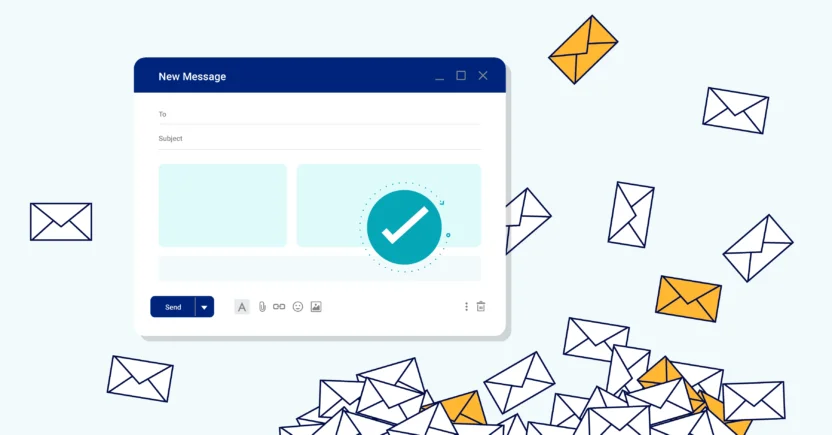
Email deliverability has been challenging marketers for as long as email marketing has existed. Yet the key is the same as it ever was: Be relevant and timely. When customers trust your brand to provide useful information when they want it, they will engage with your emails. And that engagement will improve your deliverability. That makes the email marketing best practices described above even more important.
You can improve your deliverability by building a solid permission-based email list based on opt-ins, monitoring your sending frequency to make sure you’re not over-messaging by sending too many emails, personalizing content, and timing by segmenting and using AI, and providing a seamless omnichannel experience that develops trust in your brand.
But even when you are doing all that, keep a close eye on deliverability. If it should suddenly decrease, even by a small amount, take a look at subject lines, timing, offers, and everything else you can think of to see if you can discover the cause. And sometimes the cause is outside of your control because an email provider like Gmail made a change. That’s why using email marketing software that manages deliverability for you is so important.
8. Analyze and report on email campaign performance
Although it can be easy to assume all is going well in your email efforts, you need to pay close attention to the actual results by tracking and analyzing performance—especially when tracking the progress of your email marketing strategy.
While open rates and click-through rates are the most common metrics to track, there are a few others to pay attention to, including conversions and deliverability. And you’ll want to keep an eye on these metrics per campaign and over time. To make it easier to do this tracking and analyzing, choose an email marketing platform that automates it for you.
9. Manage and reduce unsubscribes
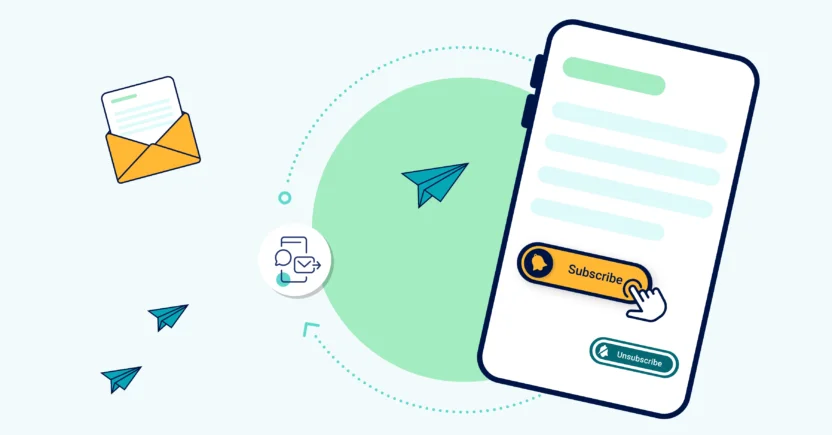
Building an email list is difficult, so it can be disheartening to see unsubscribe rates go up. If that happens, figure out why. A certain number of unsubscribes is to be expected. Customers lose interest or move on or age out. But a sudden jump means you have a problem.
That’s why we recommend viewing unsubscribes as something useful. It’s a way of getting customer feedback that you can use. Did you increase your email sends from three times per week to four and then saw a jump in unsubscribes? That tells you four is probably too many. Did you offer the same discount time and time again, and your unsubscribe rate when up? Then again, your customers are giving you feedback.
No one wants an unsubscribe but they are inevitable. So follow the best practice of keeping an eye on them and taking steps to reduce them by following all the other best practices described above.
Deploying a Successful Email Marketing Strategy: Concluding Thoughts
Now you’re ready to develop your email marketing strategy with tactics designed to make it happen. Remember, the goal is the desired outcome. The strategy is the plan to achieve the goal. And the tactics are the steps you will take to carry out the implementation of the plan or strategy.
At the core of all this, you will need a solid email marketing partner that makes your tactics easier to implement and your results easier to track and analyze. MoEngage has the expertise, technology, and features you need to succeed. To find out if MoEngage is the partner for you, request a demo here.















